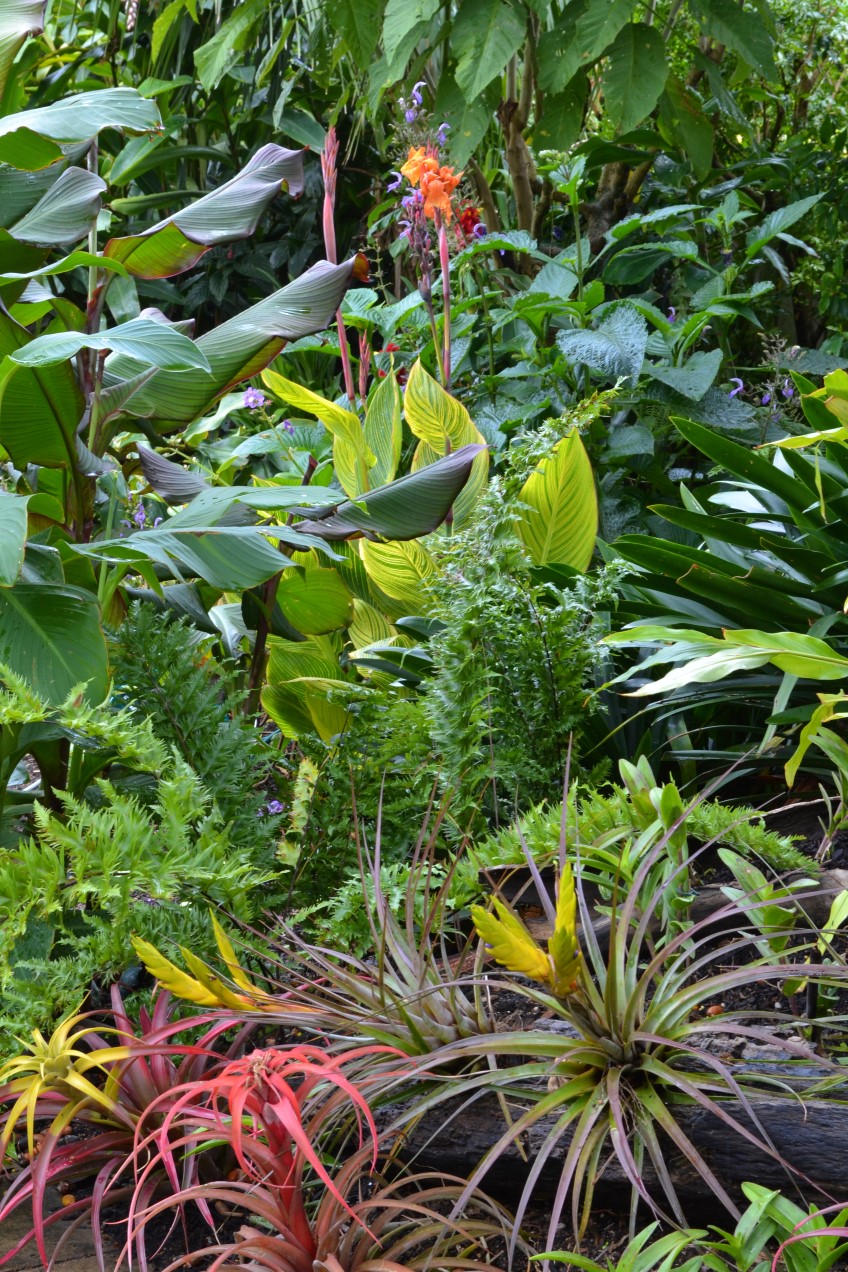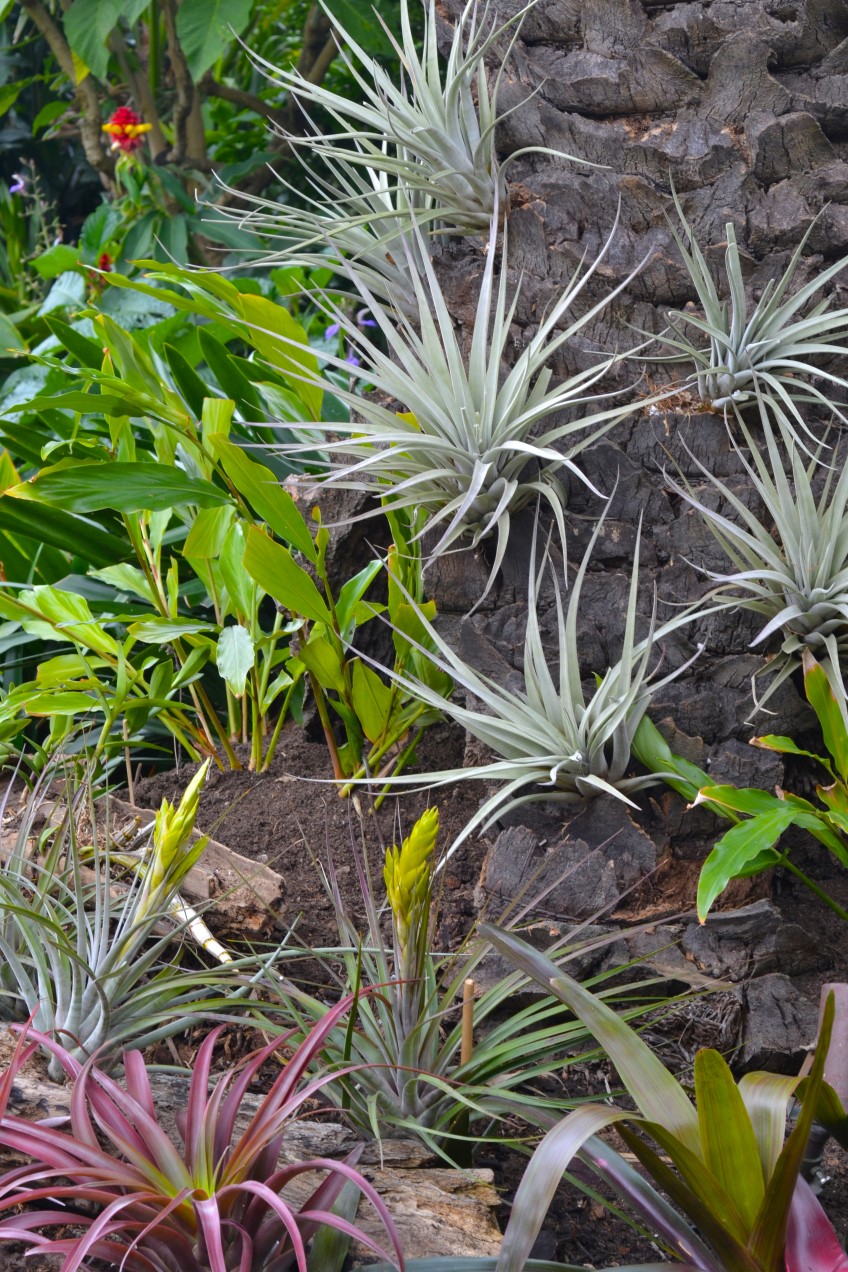Growing plants beneath established trees can be challenging.
There’s no direct light, roots take up space and water, the soil becomes dry and compacted, and to compound the problem, the tree roots sucks up the available nutrition, leaving precious little behind.

Photo - Robin Powell
Despite the challenges, the space beneath trees can be effectively planted. The keys to success are wise plant choices and
some clever soil conditioning.
Start by removing any weeds or grass from the area. Lightly break up the exposed soil, taking care not to damage tree roots. Next, build up the soil by
adding compost and manure, but keep the area around the trunk clear. Add a wetting agent to increase water retention. Choose plants in small pots or
tubes, which will keep costs down and allowing for easy planting. Here are some durable, and good-looking, options.
Tillandsias
Commonly referred to as air-plants these relatives of bromeliads are epiphytic, meaning that they absorb moisture through their leaves, not their roots.
That makes them perfect choices for spots where digging is impossible. Plant into a very well-draining mulch, or superglue onto a stable support. Tillandsias
will manage on moisture from the air unless conditions are extremely dry, in which case water a few times a week.
Hellebore
Also called winter roses, these lovely plants perform best in cooler parts of Australia but will tolerate periods of heat and drought once established.
They like protection from summer sun and bright conditions over the cooler months so are best under deciduous trees.
Ferns
These are ideal for sheltered positions that remain moist and protected from summer heat. There is an almost endless diversity so take your pick and create
a mini-rainforest of lush greenery in a mix of shapes, sizes and textures. Provide a rich soil full of compost that holds moisture well.
Viola hederacea
This evergreen native perennial produces a dense carpet of low-growing bright green leaves. Attractive purple and white flowers are profuse through summer
and present most of the year. This viola easily covers large spaces and performs well in a variety of conditions.

Photo - Robin Powell
Text: Shane Neill